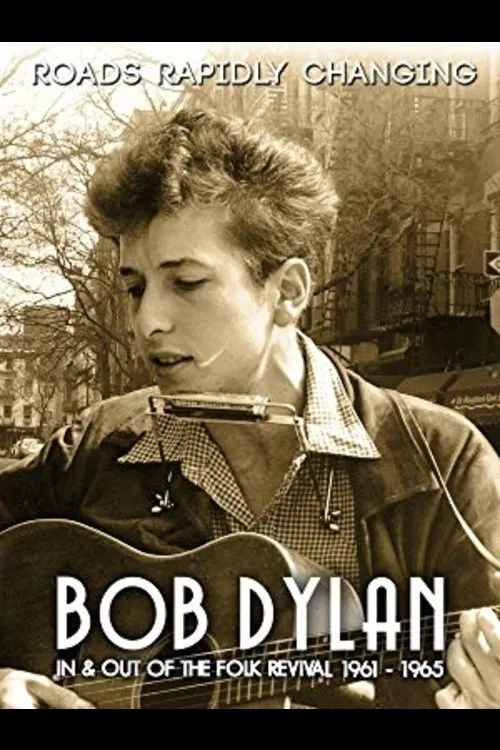Bob Dylan: Roads Rapidly Changing - In & Out of the Folk Revival 1961 - 1965

Plot
In the early 1960s, New York City's Greenwich Village was the epicenter of a cultural and musical explosion known as the Folk Revival. This movement was a fusion of traditional American and European folk music, infused with a newfound sense of social consciousness and artistic freedom. At the heart of this scene was Bob Dylan, a young and ambitious singer-songwriter from Minnesota who would go on to become one of the most influential figures in American music. As the Village Folk Revival gained momentum, Dylan's star was rising. He had moved to New York City in 1961, joining a vibrant community of musicians and artists who shared his passion for social justice and artistic expression. Dylan's music was a key component of this movement, with his raw, poetic lyrics and distinctive fingerpicking style resonating with audiences who were hungry for something new and authentic. The film "Bob Dylan: Roads Rapidly Changing - In & Out of the Folk Revival 1961-1965" delves into the fascinating story of Dylan's entry into and departure from this pivotal moment in music history. Through a combination of new interviews with key figures from the era, rare performances, and historical footage, the film provides a rich and engaging portrait of a moment that shaped the course of rock 'n' roll. In the early 1960s, Dylan was still refining his craft, honing his skills as a performer and songwriter in the vibrant clubs and coffeehouses of Greenwich Village. He was heavily influenced by the folk traditions of Woody Guthrie and Pete Seeger, and saw his music as a vehicle for social commentary and activism. Dylan's early performances were marked by a raw, emotive energy that quickly gained him a following among the Village's hipster crowd. As his popularity grew, Dylan became a central figure in the Folk Revival movement, rubbing shoulders with other influential artists such as Joan Baez, Dave Van Ronk, and Phil Ochs. The Village was a hotbed of creative ferment, with jazz, rock, and folk influences swirling together in a vibrant musical stew. Dylan's music was a key part of this scene, reflecting his own unique blend of folk, rock, and poetic sensibilities. The film features a range of insightful interviews with those who knew Dylan during this period, offering a personal and firsthand account of his rise to fame. Among those interviewed are Joan Baez, who recalls the early days of Dylan's career and the way he would perform in her company, while also sharing her own observations about Dylan's growing reputation as a songwriter and performer. Other key figures, including musician and historian Dave Van Ronk and music journalist Studs Terkel, also share their perspectives on Dylan's early years and the impact he had on the Folk Revival. Throughout the film, rare performances and archival footage offer a glimpse into the excitement and energy of the Village scene during its heyday. We see Dylan performing in iconic venues such as Gerde's Folk City and the Cafe Wha?, his music and charisma captivating audiences who were seeking something authentic and meaningful in a post-Beatles world. However, by 1965, the Folk Revival was beginning to give way to the rise of rock 'n' roll. The Beatles, the Rolling Stones, and other British bands were arriving in America, bringing with them a new kind of musical energy and a fresh generation of fans. As the cultural landscape shifted, Dylan began to experiment with new musical directions, incorporating rock and electric instruments into his work. The film captures this pivotal moment, as Dylan's music begins to evolve and he starts to explore new sounds and themes. His 1965 single "Like a Rolling Stone" marked a turning point in his career, its innovative production and socially conscious lyrics signaling a new era in music that would shape the course of American popular culture. Through its rich tapestry of interviews, performances, and historical footage, "Bob Dylan: Roads Rapidly Changing - In & Out of the Folk Revival 1961-1965" offers a captivating portrait of Dylan's entry into and departure from the Folk Revival. The film explores the fascinating world of 1960s Greenwich Village, where music, art, and activism intersected in a swirling vortex of creativity and self-expression. As a tribute to this pivotal moment in music history, the film is a must-see for anyone who loves Bob Dylan, folk music, or the era's vibrant cultural landscape.
Reviews
Recommendations


